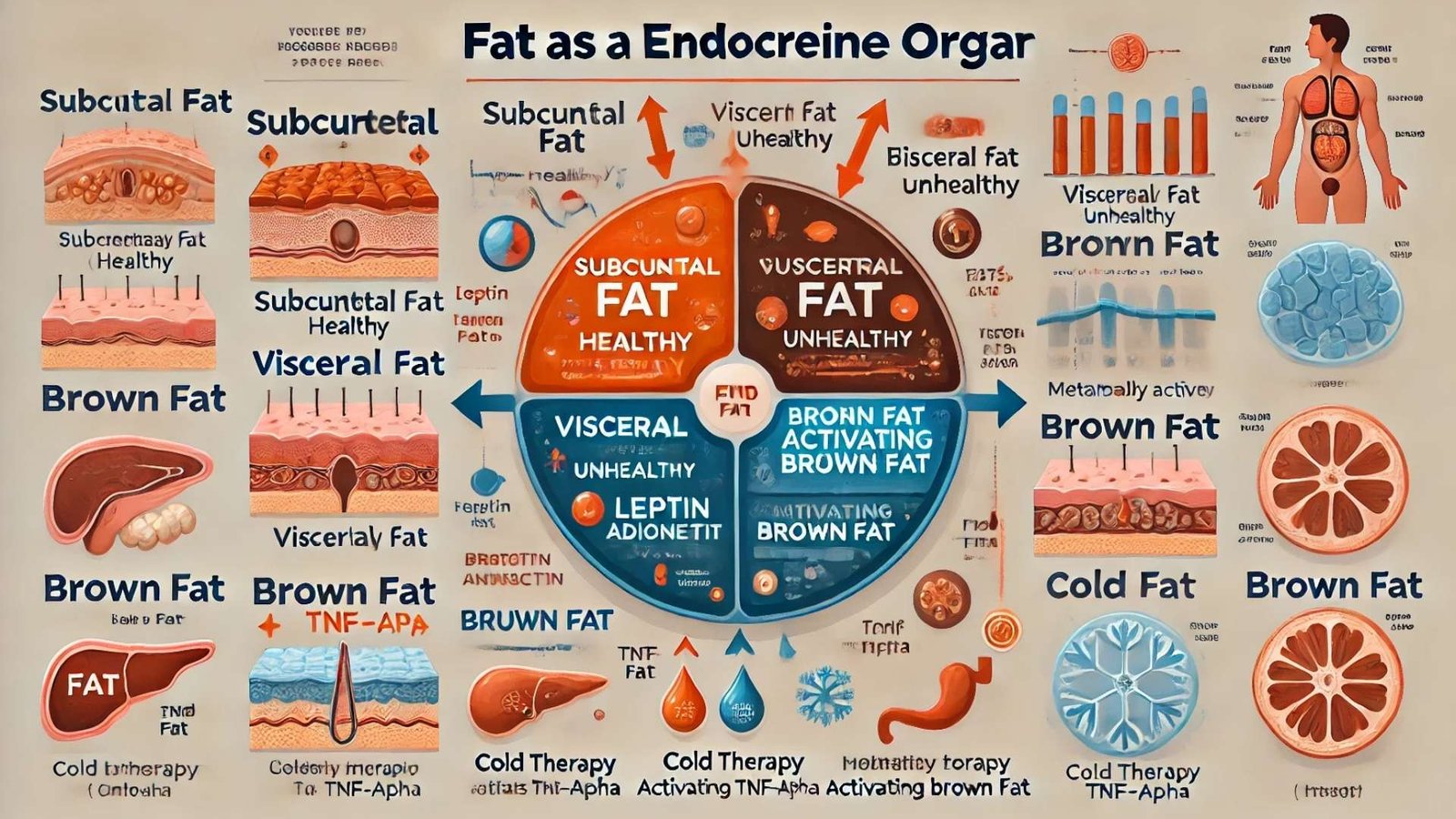Think fat is just a lifeless blob sitting under your skin, waiting to expand every time you eat a donut? Think again!
Fat is actually a highly active endocrine organ, meaning it produces hormones that affect everything from your appetite and metabolism to inflammation and even reproductive health. In fact, where you store fat matters just as much as how much fat you have.
For example, did you know that fat plays a critical role in menopause? Or that not all fat is bad—some types actually burn calories and can boost your metabolism? Today, we’re diving deep into the surprising science of fat and why it’s way smarter than you think!
Why Men and Women Store Fat Differently
Ever wonder why women tend to store fat in their hips, thighs, and buttocks while men seem to pack it around their bellies? Blame sex hormones!
During puberty, estrogen directs fat storage to areas like the hips and thighs, prepping a woman’s body for pregnancy. Meanwhile, testosterone pushes men to store fat around their midsection, often leading to the classic “beer belly” look.
But it’s not just about appearance—where you store fat affects your health.
- Subcutaneous fat (under the skin) is more common in women and is metabolically safer.
- Visceral fat (around organs), which men tend to accumulate more, releases inflammatory signals that increase the risk of heart disease, diabetes, and insulin resistance.
So, fat isn’t just about body shape; it actually determines long-term health risks.
Menopause: A Metabolic Game-Changer
Menopause changes everything—mood, metabolism, and even where fat is stored.
Before menopause, a woman’s ovaries produce most of her estrogen. But once menopause hits, the ovaries slow down, and fat cells step in to help by converting androgens into estrogen in a process called aromatization.
The problem?
- More fat cells = more estrogen, which can lead to weight gain, increased belly fat, and a slower metabolism.
- Plus, as estrogen levels drop, metabolism naturally slows, making it easier to gain weight.
This explains why many women struggle with weight gain after menopause, especially around the abdomen. The key? Supporting metabolism through diet, exercise, and managing stress to keep fat from taking over as the primary hormone producer.
Leptin: The “I’m Full” Hormone That Stops Working
Leptin is the boss of hunger control—it tells your brain, “Hey, we have enough energy stored. Stop eating!”
But there’s a catch… Leptin resistance.
When you gain weight, your fat cells produce more leptin. But just like insulin resistance, too much leptin over time causes the brain to ignore its signals. The result?
- You feel hungry all the time, even when your body has enough stored energy.
- Your metabolism slows down, making it even harder to lose weight.
And here’s a fascinating twist: Leptin is essential for fertility! If leptin levels are too low (like in extreme dieting or anorexia), the body shuts down reproductive function, explaining why underweight women often stop having periods.
Adiponectin: The Unsung Hero of Metabolic Health
Meet adiponectin, your metabolism’s best friend.
This lesser-known hormone does two amazing things:
- Improves insulin sensitivity (helps your body use blood sugar properly).
- Reduces inflammation and protects against heart disease.
The problem? Bigger fat cells make LESS adiponectin, meaning the more weight you gain, the harder it is for your body to use insulin effectively—leading to insulin resistance and type 2 diabetes.
How can you boost adiponectin naturally?
- Exercise regularly—especially strength training.
- Eat healthy fats (like avocados, nuts, and olive oil).
- Get quality sleep, as poor sleep lowers adiponectin levels.
Inflammation, Clots, and the Dark Side of Fat
Not all fat is friendly. Visceral fat (belly fat) acts like a hormone factory, pumping out inflammatory chemicals that wreak havoc on the body.
Some of the worst offenders?
- TNF-alpha: Directly causes insulin resistance, increasing diabetes risk.
- PAI-1: A clot-promoting hormone that raises the risk of heart attacks and strokes.
This is why people with more belly fat have higher risks of heart disease—it’s not just about weight, but what your fat is doing to your body behind the scenes.
Luckily, reducing visceral fat through low-carb eating, intermittent fasting, and exercise can lower these dangerous hormones and improve metabolic health.
Brown Fat & Cold Therapy: Your Secret Metabolic Booster
Not all fat is bad—some fat actually burns calories!
Brown fat is a special type of fat that generates heat by burning calories, and it produces T3, the active form of thyroid hormone, which speeds up metabolism.
Want to activate your brown fat?
- Cold exposure (ice baths, cold showers, or even turning down your thermostat).
- Exercise, which stimulates brown fat activity.
- Caffeine, which has been shown to activate brown fat and increase calorie burning.
So, instead of fearing fat, work on transforming white fat into active, calorie-burning brown fat!
Conclusion: Your Fat Is Smarter Than You Think!
Fat is not just storage—it’s an active hormone-producing powerhouse that affects your metabolism, inflammation, and even fertility.
Key Takeaways:
✅ Fat location matters—belly fat = inflammation, hip/thigh fat = safer storage.
✅ Too much leptin leads to leptin resistance, making weight loss harder.
✅ Adiponectin keeps metabolism running smoothly, but obesity lowers it.
✅ Visceral fat produces dangerous inflammatory chemicals linked to disease.
✅ Brown fat burns calories and boosts metabolism—and you can activate it!
Now that you know the truth about fat, what changes can you make to support your metabolism and hormone health? Share this post with a friend and start the conversation—because knowledge is metabolism power!

